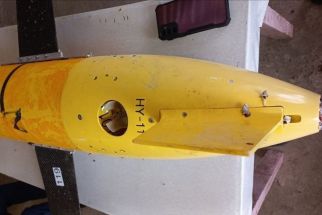Celebrity RP eagle turns 18
DAVAO CITY , Philippines — Pag-asa, the first Philippine Eagle hatched and raised in captivity, turned 18 yesterday.
Pag-asa, now kept in a specialized cage, remains as the most popular symbol of the Philippine Eagle conservation program in the country.
After Pag-asa was born at the Philippine Eagle Center in Malagos District in 1992, 21 more eagles were hatched and bred in the 8.4-hectare center.
To mark Pag-asa’s 18th birthday, the Philippine Eagle Foundation (PEF) launched a forum series on climate change and its relation to the eagle conservation program in the country.
“There is nothing more fitting to mark the 18th year of Pag-asa than initiating a forum series that would enhance the awareness of our youth on environmental issues such as climate change,” said PEF executive director Dennis Salvador.
The forum series will be held in different schools in the city.
Grace Aragon, manager for center-based education of the PEF, said the survival of the Philippine eagle population in the wild is dependent on the preservation of its habitat, particularly dipterocarp trees, a family of sturdy trees with a wide canopy of leaves.
“Philippine eagles nest on dipterocarp trees; therefore, saving the Philippine Eagle requires saving its forest habitat, too. And trees, which absorb carbon in the atmosphere, are one of the most practical weapons against climate change. The eagle, the climate and the survival of the human race are closely linked; we hope that these students and the general public will appreciate that in the forum series.”
The PEF is also encouraging students to join ASTIG (Agila Support Team-Isang Galaw), a local youth coalition engaged in environmental preservation projects.
“Taking care of the earth is everyone’s shared responsibility. The call to save the environment is not only for those who work in an environmental organization or in government; it is everyone’s responsibility, because we all live on this planet,” Aragon said.
There are now less than 1,000 Philippine eagles in the wild, mostly in the forests of Mindanao, Samar, and Leyte.
“Habitat management and reforestation programs are so important as Philippine eagles occupy a territorial space of 7,000 to 13,000 hectares of forest. It means that if we lose our forests, we would also lose the places that the eagles are supposed to stay,” Salvador said.
He said since PEF was founded in 1987, it has been working with local government units and various agencies to have 300,000 hectares of seven forest areas in Mindanao declared as protected areas.
“In the next few years we are working on the establishment of a 28-kilometer, 3,000-hectare forest corridor in Arakan Valley to benefit the local communities there, the Philippine Eagle and other wildlife, and contribute to global climate change efforts as well,” he said. – Edith Regalado
- Latest
- Trending



























